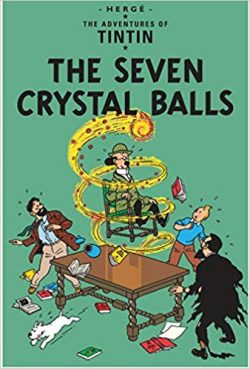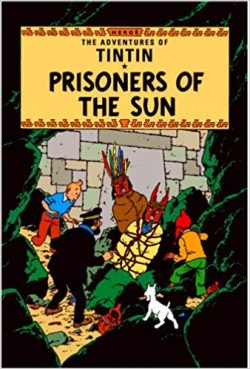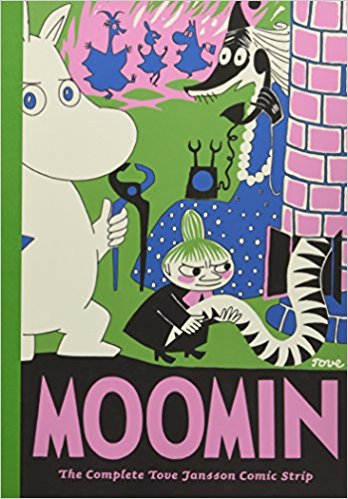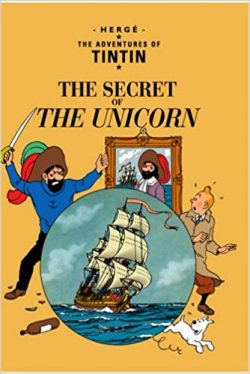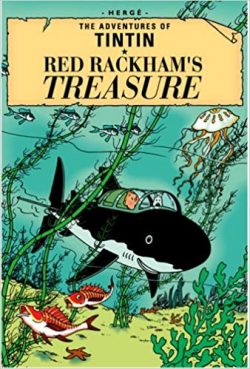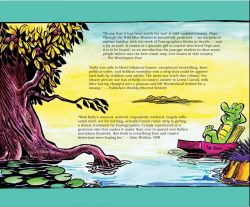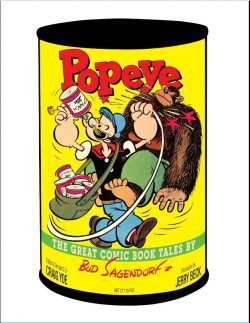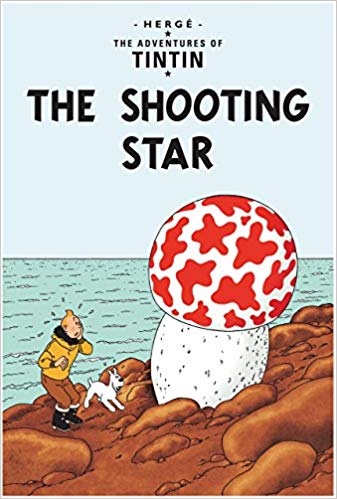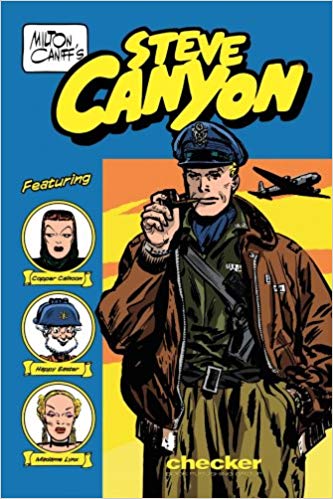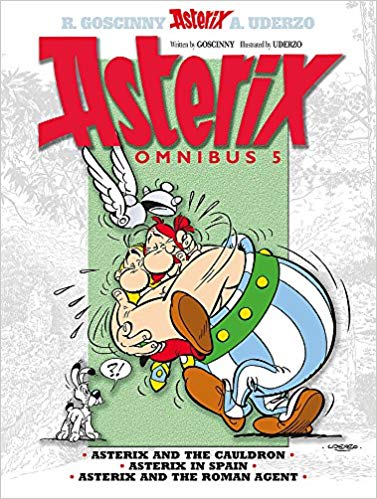
By Goscinny & Uderzo, translated by Anthea Bell & Derek Hockridge (Orion Books)
ISBNs: 978-1-44400-488-5 (HB); 978-1-44400-490-8 (PB)
One of the most-read comics series in the world, the collected chronicles of Asterix the Gaul have been translated into more than 100 languages since his debut in 1959, with animated and live-action movies, TV series, assorted games, toys and even a theme park outside Paris (Parc Astérix, if you’re planning a trip…) spinning off from his hilarious exploits.
More than 325 million copies of 34 Asterix books have sold worldwide, making his joint creators France’s bestselling international authors.
The diminutive, doughty potion-powered champion of Gallic Pride was created by two of the art form’s greatest proponents, writer René Goscinny & illustrator Albert Uderzo and although their inspirational collaborations ended in 1977 with the death of the prolific scripter, the creative wonderment still continued until relatively recently from Uderzo and assistants – albeit at a slightly reduced rate.
The wonderment works on multiple levels: ostensibly, younger readers revel in the action-packed, lavishly illustrated comedic romps where sneaky, bullying baddies get their just deserts whilst we more worldly readers enthuse over the dry, pun-filled, sly satire, especially as enhanced for English speakers by the brilliantly light touch of translators Anthea Bell & Derek Hockridge, who played no small part in making the indomitable Gaul and his gallant companions so palatable to the Anglo-Saxon world. (Me, I still delight in a divinely delivered “Paff!†as much as any painfully potent pun or dryly searing jibe…)
The stories were set on Uderzo’s beloved Brittany coast, where a small village of warriors and their families resisted every effort of the Roman Empire to complete the conquest of Gaul, or alternately, anywhere in the Ancient World, circa 50BC, as the Gallic Gentlemen wandered the fantastic lands of the Empire and beyond…
When the heroes were playing at home, the Romans, unable to defeat this last bastion of Gallic insouciance, resorted to a policy of containment. Thus, the little seaside hamlet is permanently hemmed in by the heavily fortified garrisons of Totorum, Aquarium, Laudanum and Compendium.
The Gauls don’t care: they daily defy the world’s greatest military machine simply by going about their everyday affairs, protected by the magic potion of resident druid Getafix and the shrewd wits of the rather diminutive dynamo and his simplistic, supercharged best friend…
Firmly established as a global brand and premium French export by the mid-1960s, Asterix the Gaul continued to grow in quality as Goscinny & Uderzo toiled ever onward, crafting further fabulous sagas; building a stunning legacy of graphic excellence and storytelling gold.
Asterix and the Cauldron was the 13th saga, originally running in Pilote #469-491 throughout 1968 before being first translated into English in 1976.
It’s a convoluted tale of treachery, felony and dishonour as fellow Gaulish chieftain Whosemoralsarelastix – a cunning and conniving Roman collaborator – convinces the reluctant but big-hearted Vitalstatistix to guard the occupied cliff-top community’s treasury from Imperial tax collectors.
Despite knowing how untrustworthy the scoundrel is, Gaul must help Gaul and the rogue’s huge onion-soup cauldron, stuffed with his people’s golden Sestertii, is placed under the stewardship of the village’s greatest hero and most trustworthy warrior: Asterix.
However, that night, as a great inter-village feast is consumed, somebody cuts their way into the guard hut and steals the glittering contents of that mighty tureen. Of course, dodgy Whosemoralsarelastix wants his money back and the noble Vitalstatistix is honour-bound to replace the stolen horde and disgraced Asterix is banished until he can refill the empty cauldron with gold…
Trusty Obelix refuses to turn away from his friend and joins the quest, which first takes them to the garrison of Compendium, where the wily warrior intends to refill the empty churn with some of the gold the occupiers have been regularly collecting from Gauls.
Unfortunately, Caesar has been experiencing some cash-flow problems of his own and not only has he been rushing the takings to Rome, he hasn’t even paid his soldiers for months…
With disharmony, mutiny and strike action imminent among the legions, Asterix and Obelix realise they must look elsewhere for their loot.
Even their old acquaintances the pirates are cash-strapped – and all-too-soon traditionally thrashed – so the doughty duo must seek their fortune at the grand market in Condatum, briefly and disastrously becoming boar merchants, paid street boxers, actors and charioteers, before turning to crime and planning a bank robbery…
Even here our two just men fare badly. In desperation, they decide to rob Caesar’s tax collector, but Asterix discovers a strange thing. Not only has destitute Whosemoralsarelastix somehow paid his taxes, but the coins deposited smell of onion soup…
With realisation dawning, Asterix visits the cliff-dwelling villagers for a little chat and a mighty reckoning…
Rich with slapstick action and cutting commercial satire (for example the tax collector is a caricature of France’s then Finance Minister Valéry Giscard d’Estaing), this hilarious crime caper is a glorious example of dry yet riotous adventure comedy.
Astérix en Hispanie promptly followed (during 1969 and in Pilote #498-519) in France and was translated into English as Asterix in Spain two years later. It recounts how a valiant group of Iberian warriors are similarly holding-out against Caesar’s total conquest of that proud nation.
Chief Huevos Y Bacon is the noble warrior leading the resistance, but when his haughty son Pepe is captured, all seems lost. Fearing reprisal or rescue, the Romans hastily despatch the hostage lad to the garrison at Totorum, under the oversight of brutish Spurius Brontosaurus. He has no idea what the “pacified†Gauls of the area are like and has his hands more than full contending with the appallingly behaved and inspirationally vicious young prince…
When his guards encounter Gauls in the great forest, they are easily overwhelmed by playful Obelix. Asterix takes Pepe back to the village where – following an ill-advised and painful attempt by Brontosaurus and the legion to reclaim him – our heroes decide to return him to his father.
Most pertinent and urgent in reaching this decision is the spoiled brat’s obnoxious behaviour…
Brontosaurus has pragmatically decided the kid is perfectly safe with the Gauls, and, unaware of their planned jaunt to Hispania, smugly returns to his post. Meanwhile, after their mandatory encounter with pirates, Asterix, Obelix and faithful mutt Dogmatix make their leisurely way through the scenic countryside (offering many trenchant asides regarding the then popular French passion for Spanish touring holidays), until a chance encounter in an inn reveals to the General Brontosaurus how close they are to undoing all his plans.
Venal but no coward, the Roman joins their excursion party, captures Asterix and steals the Gaul’s magic potion: planning to destroy Huevos Y Bacon’s resistance once and for all. However, Obelix, Pepe – and Dogmatix – have a plan to spectacularly save the day…
Full of good-natured nationalistic pokes and trans-national teasing, liberally served up with raucous hi-jinks and fast-paced action, this is another magical titbit of all-ages entertainment.
During 1970, Pilote #531-552 serialised La Zizanie. It translates as “strifeâ€, but on making the jump to English in 1972, became the far less evocative Asterix and the Roman Agent. The tale featured more homeland insecurity as Caesar, under attack by the Roman Senate over the indomitable, unconquerable Gauls, deploys his greatest weapon: a double-edged sword named Tortuous Convolvulus, whose every word and gesture seems to stir ill-feeling and conflict in all who meet him.
Where Force of Arms has failed perhaps this living manifestation of disharmony and dissent might forever fracture the Gauls’ unshakable comradeship and solidarity with dose of Roman entente dis-cordiale…
On the crossing, just two minutes with the conniving Convolvulus has the brotherhood of pirates at each other’s throats, and, even while discussing plan with Aquarium’s commander Felix Platypus, the agent’s unique gift sows dissonance and violence, so when he finally enters the village it’s not long before the high-spirited and fractious Gauls are at war with each other…
Women are cattily sniping at each other, traders are trading blows and even Asterix and Obelix are on the outs. But that’s not the worst of it: somehow the idea has gotten around that their sharp little champion has sold out to the Romans…
With unrest abounding and abundant, the Romans soon have the secret of the magic potion too (or do they?) but ingenious Convolvulus hasn’t reckoned on two things – the sheer dimness of Imperial troops and the invaluable power of true friendship – leaving Asterix and Obelix a way to overcome their differences, turn the tables and once more save the day.
At last, the agent provocateur is forced to realise that sometimes one can be too smart for one’s own good…
Brittle, barbed and devilishly sharp, this yarn was reputedly based on lingering ill-feeling following an internal power-struggle at Pilote which almost cost editor Goscinny his job. The original title for the tale transliterates as “The Ill-feeling†or “The Dissensionâ€. Seen through the lens of 40 years of distance, however, all that can be seen now is stinging, clever, witty observational comedy and magnificently engaging adventure, and surely that’s what matters most?
Asterix sagas are always stuffed with captivating historical titbits, soupcons of healthy cynicism, singularly surreal situations and amazingly addictive action, illustrated in a magically enticing manner. These are perfect comics that everyone should read over and over again.
© 1968-1970 Goscinny/Uderzo. Revised English translation © 2004 Hachette. All rights reserved.

